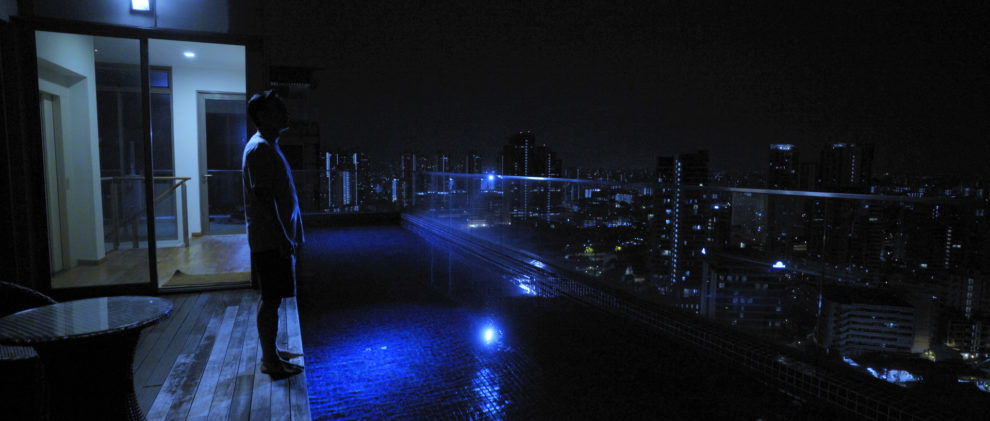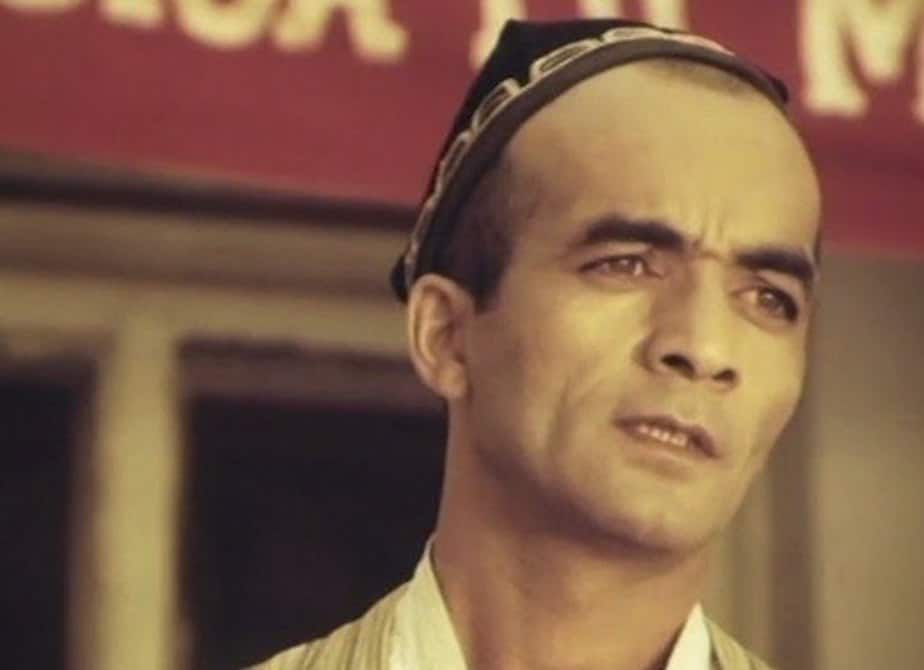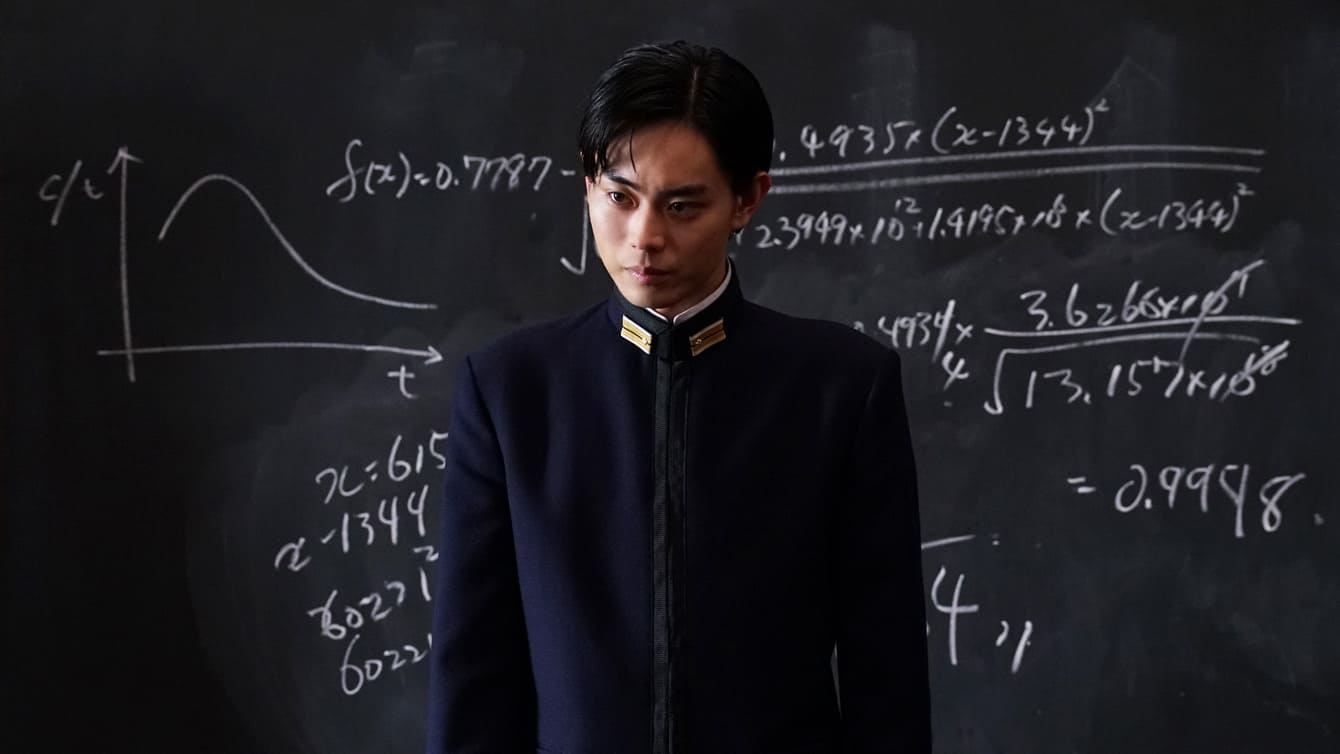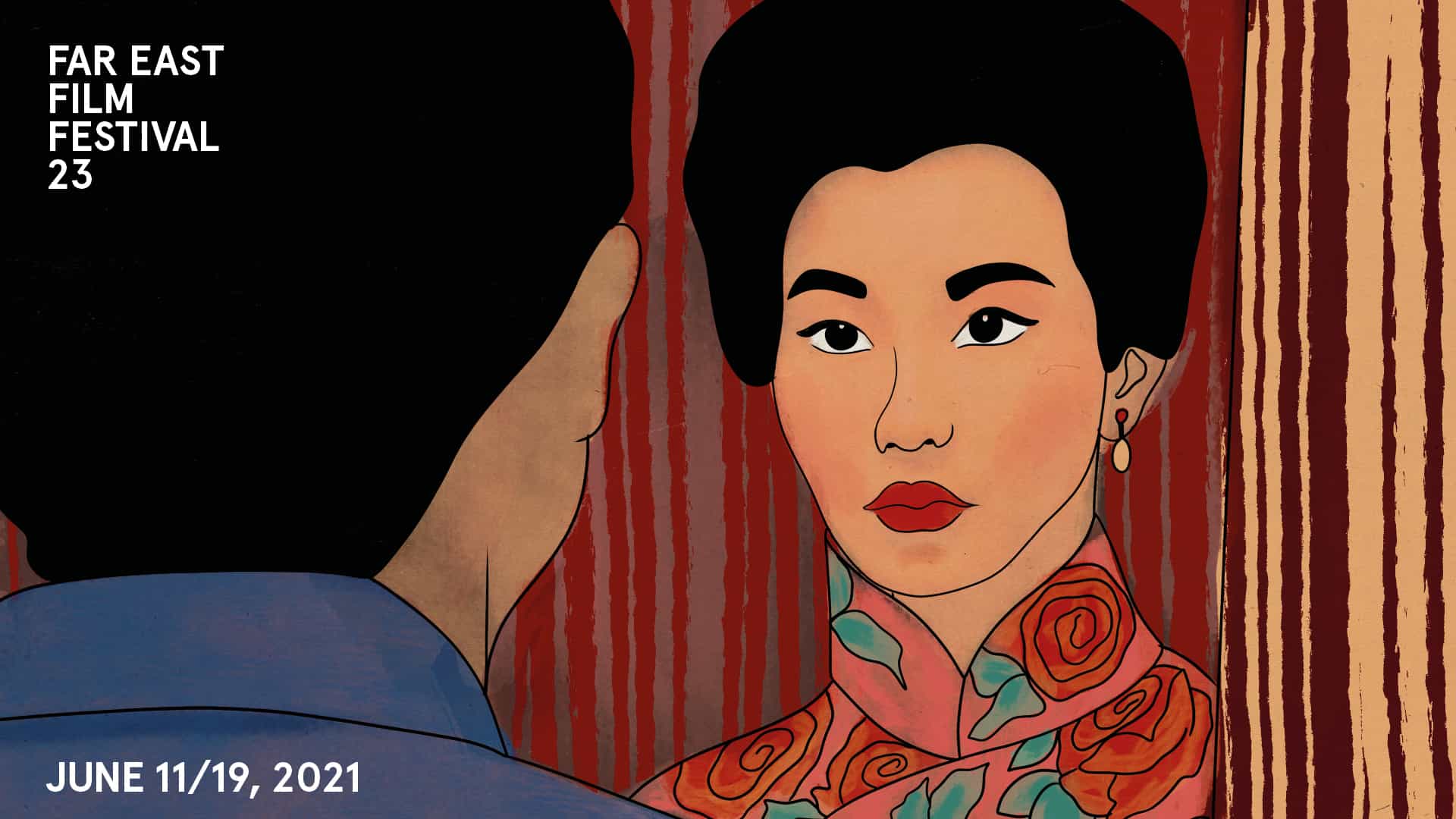by Earl Jackson
If there had been a Congeniality award given at the 2019 Five Flavours Film Festival in Warsaw, the shoo-in winners would be the delightful combo of Goh Ming Siu and Scott C. Hillyard. They were both charming, engaged, gregarious, thoughtful conversationalists, genuine and clearly happy to be there. Ironically, they were there to present “Repossession”, a film they co-wrote and co-directed, a horror film that takes its time to punch you in the face and to haunt you longer than any of the unhappy denizens of that condo suffer such visitations.
Buy This Title
on Amazon
“Repossession” is actually two films both concerning the plight of Jim (Gerald Chew): the first focuses on the difficulties Jim suffers in attempting to cope with the loss of his job that had supported the rather cushy life of his family; the second film, which begins approximately a third of the way into the first, suggests Jim to be the target of demonic persecution.Jim's downward spiral begins with his firing, when he refuses to sign a resignation letter and instead demands an explanation the firm does not bother to grant him. This story alone is already frightening in its ordinariness, its credibility and its reflection of the precarity of 21st-Century life. I suspect that several of the reviews that excoriate Jim for his actions (and non-actions) after being fired, are written by people still young enough to believe in the eternality of their own youth and the infinity of their opportunities. I see Jim's inability to tell his wife what happened and his disastrous slowness in taking practical steps to protect his home as symptoms of PTSD. Although detailing Jim's dreadful natural and supernatural fates, Repossession maintains a compassion toward its doomed protagonist missing in Eric Khoo's “My Magic” (2008) or Royston Tan's “12 Lotus” (2008).

The second horror story begins in the corridors of a low-income housing facility, that serves as a repository of that which has been repressed from the Singaporean daydream and an interface with Jim's unconscious. He and his wife, Linda (Amy Cheng) are distributing meals when he is finally about to tell her what has happened. But he only says, “Linda, I lost my” when two arms reach through the bars behind him, grab him about the throat and a man's voice shouts, “You devil! I got you now! I'll kill you!”.
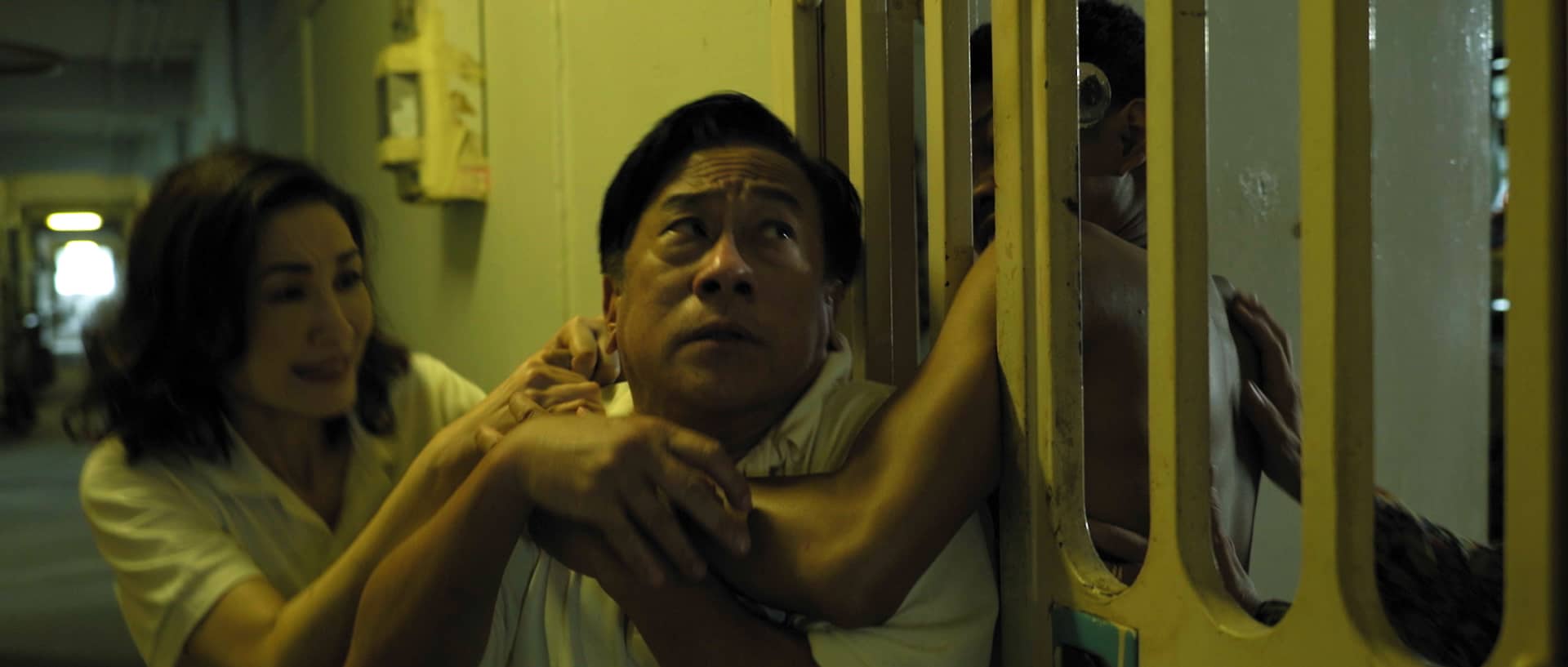
Although that encounter can be explained away, others cannot. While the voices that Jim hears could be rationalized as the pressures of his financial situation, flashbacks gradually reveal that the entity that had plagued Jim in his late childhood and in his military service has returned to taunt him through his new earthly crisis. The insinuation of the supernatural into daily life is, at first, so oblique that at times it does not seem any worse than the bank that forecloses on Jim's condo, even though Jim was holding enough money in his hand to satisfy the terms of the original loan.
The restraint that Goh and Hillyard show regarding the horror, and the attention they pay to the ordinary story are risks that pay off for those willing to go along for the ride on their terms. And I use that phrase “along for the ride” quite deliberately, because there is one scene that demonstrates what their joint direction can do while showcasing the formidable gift of Medli Loo, who, despite her youth, delivers the most frightening scene: when Jim picks up a very late-night fare in his Uber-like job that turns out to be absolute malevolence that has taken the form of a young boy.
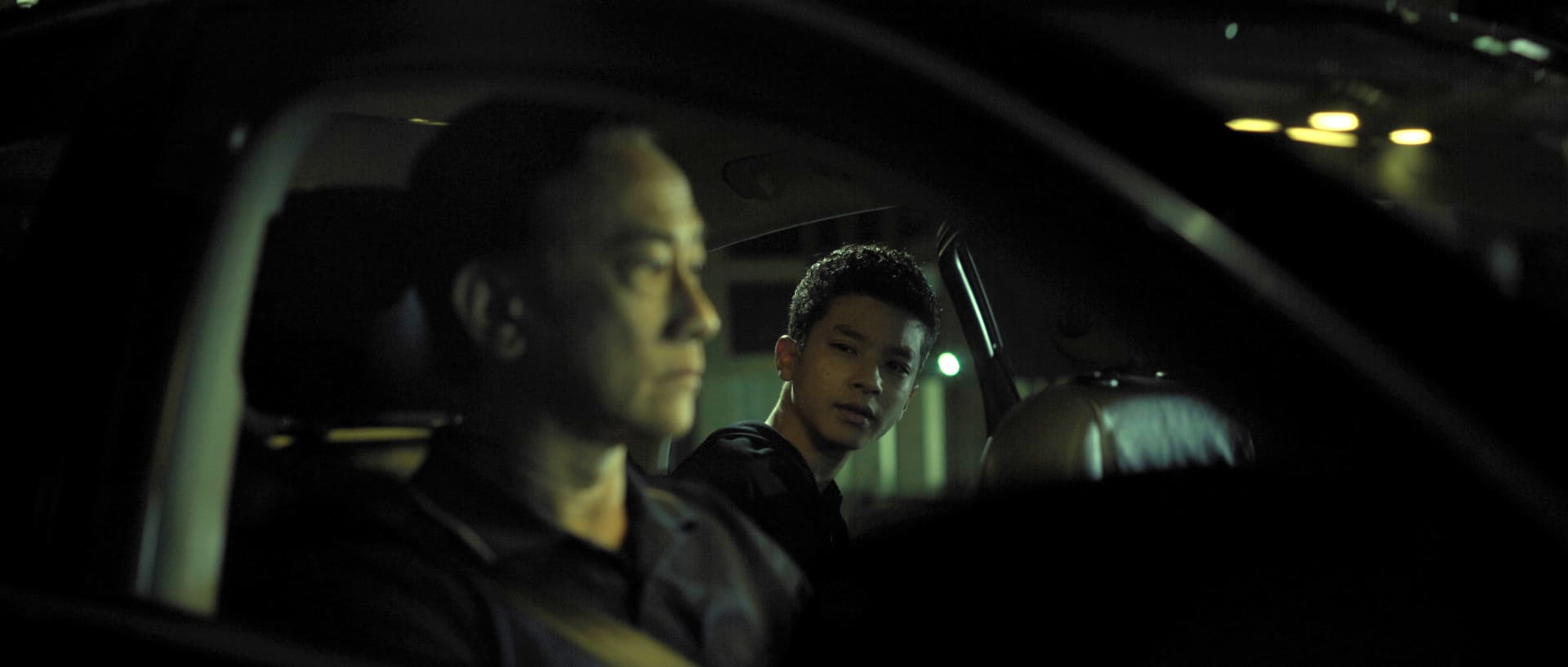
There are several scenes that convey the atmosphere of dread expected in a horror film and they are well done and effective. But I would like to point out a less conspicuous series – beginning with Jim driving away after first getting fired. There is nothing ominous on either side of the highway but that is precisely the problem. The pristine orderliness of official Singapore seems to taunt Jim, having now foreclosed the promise of Singaporean good life from him. He is navigating a well-hyped paradise that he is no longer qualified to inhabit. Goh and Hillyard manage to infuse the gloss of Singapore with the uncanny. The usually charming and always iconic entrance to the Raffles Place MRT station looks like a portal to hell. Corridors lead either to nowhere or freeze Jim between an intolerable past and an unthinkable future. Jim and Linda's living room in their swanky apartment looks like a crime scene waiting to happen, filmed anxiously from the second floor. An overhead shot of the neighborhood playground in Jim's memory transforms the whimsical design into a menacing talisman while exposing what lurks there. The pool Linda swims in seems to be incubating something dreadful.

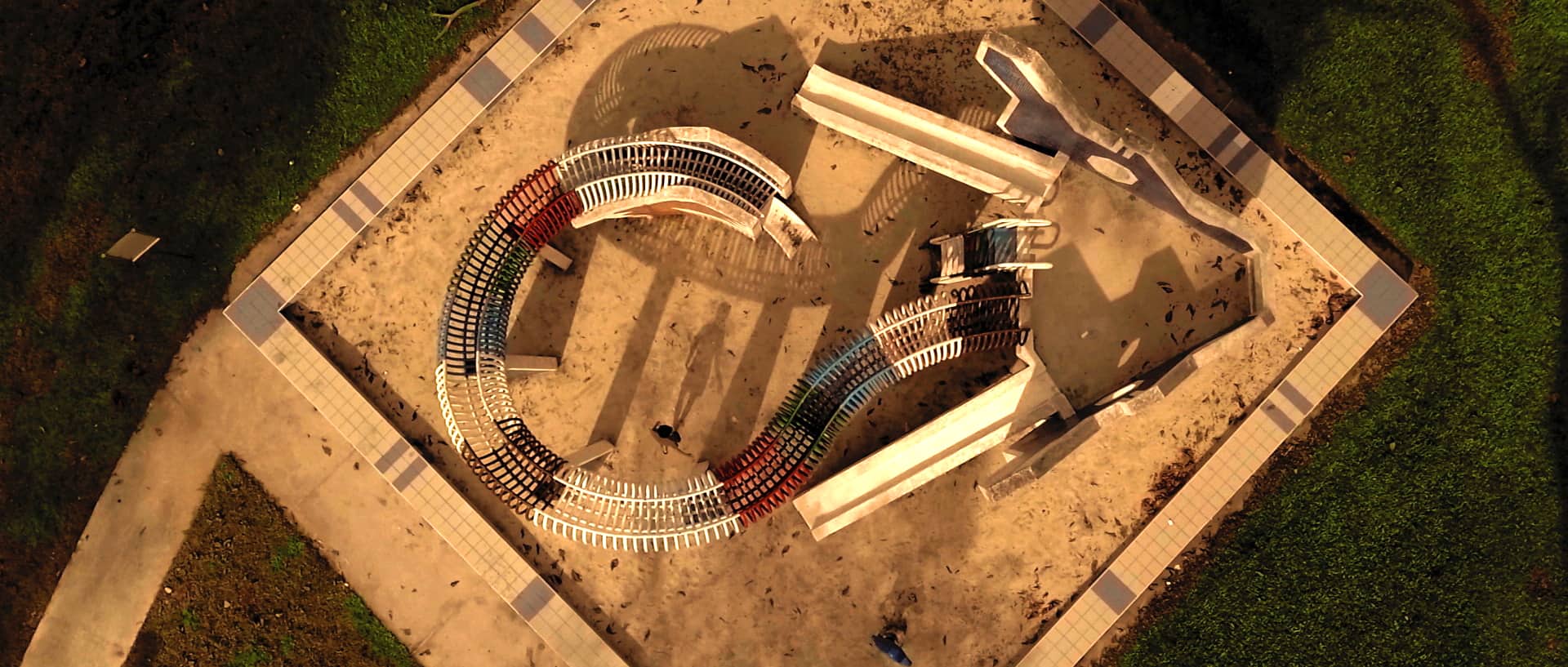
To go into any more detail would involve spoilers that would also mislead by allowing the more expected scares of the genre more weight than the very ordinariness of the main story which is the sustaining ground of the multi-leveled horror. Goh and Hillyard were courageous enough to make an experimental film that doesn't look like one. I hope they get the audiences and producers whose imagination and vision equal theirs so that we can see what else they can do.


